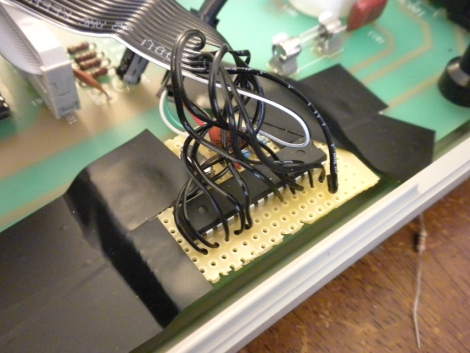
[Scott] was recently given a frequency counter, and once he brought it home, he started contemplating how he could possibly make it better. While the counter worked well as-is, he wanted to find a way to record data readings over a reasonably long period of time. He figured that interfacing it with his computer would be the best way to do this, but he had to find a way to connect the devices first.
He started poking around inside the frequency counter and stumbled upon a possible data source when taking a closer look at the display board. He found that he could read the frequency data as it was being written to the display, and send that data to his computer. He used an ATMega48 to intercept the data and code from the V-USB project to bit-bang the data to his PC over USB.
Now, anything he sees on the frequency counter can be easily collected and graphed on his computer with little fuss.
Stick around to see a quick video demonstration of his hack in action.
[youtube=http://www.youtube.com/watch?v=c6uFN52LGnc&w=470]















This is great but could there be a more detailed schematic for this great design!
I really like this project… I don’t have a use for it at this point, but I like that he “accomplished his goal.”
Looking around his blog I am pretty impressed with his comprehension. I have added him to my list of “Blogs to watch”
Everything about this is AWESOME. I especially love the bitbanging of the USB data.
@SuperNuRd – I updated the post and included notes about the schematic. The application is very device-specific, but the USB-related components are described.
Very nice job, great video, thanks.
Clever. I’ve been thinking about building a USB GPIB interface for my counter but it seems like just too much work to get datalogging. Snarfing the data from the board is much less elegant, but much less work. Great hack.
Nice, essentially a low level version of screen scraping… I love it.
Props for using VUSB, I’ve never been able to talk it into compiling.